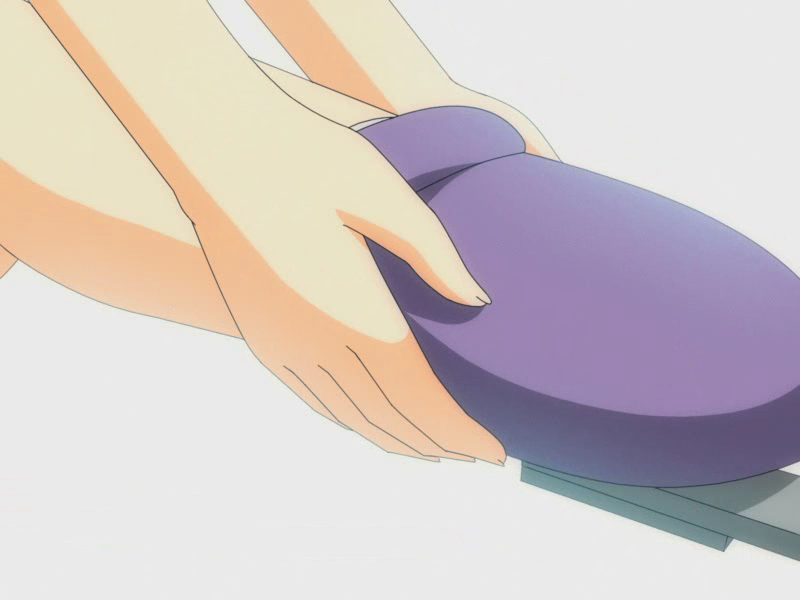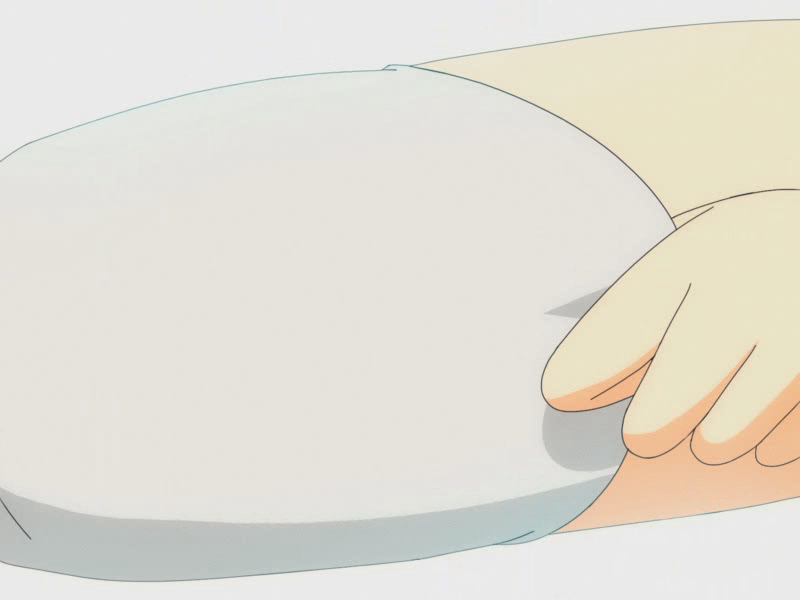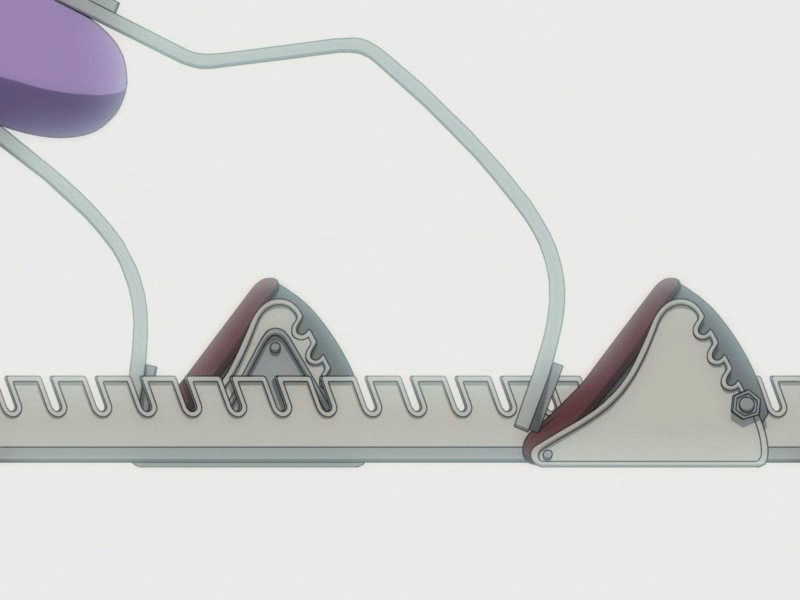Part 30: Disability Corner: Prosthetic Leg Anatomy
Disability Corner: Prosthetic Leg AnatomyAll the Disability Corners up until this point have been kind of grim. And that’s not surprising! Being disabled can suck. But to cover something a bit more neutral (and hit up the physical disability side of things since this thread has been pretty heavily neuro), let’s talk about what goes into a prosthetic leg!
(Before we begin, keep in mind this is an overview made by someone only barely familiar with the topic. If you spot something wrong, want anything added, or know about anything I’ve missed, please speak up in the thread!)
Let’s take it from the top. Prosthetic legs come in two overall types: above- and below-the-knee, depending on the situation. Emi falls into the second category, but for those who fall into the first category, they need prosthetic knees. I’d list the types out here, but there’s at least a dozen of them with their own names, quirks, and intended uses; the knee is a hideously complicated joint already, forget the fine details of how to replace it. They range from simple hinges with locking mechanisms to help you stand up to complicated machines with pneumatics to straight up robot knees with built-in microprocessors, because if you have tons of money to blow why not become a fucking cyborg. Especially if you spring for myoelectric control, which read electrical impulses sent by your nervous system and move your leg in sync
 . But those are expensive, so while you can find some truly wild knees out there, they’re likely out of your price range.
. But those are expensive, so while you can find some truly wild knees out there, they’re likely out of your price range.
Knees only matter to above-the-knee amputees, but sockets are at the core of every prosthetic leg; they’re the things that sit over the amputation site, metal or plastic cup (depending on the design) fitted to the leg in question. Sockets tend to be expensive and take a while to build, for good reason; the human leg is a complex creature designed to work as a whole unit and isn’t built to support a person’s weight on a residual limb. That obviously doesn’t mean using artificial legs is impossible, but they do need to be well-designed – not just to fit the specific limb, but also tweaked to avoid putting pressure on pressure points and support the person’s weight efficiently.

For most kinds of prosthetics, you also need a liner, basically a thin sock that fits over the stump; it’s there to prevent chafing and keep both the leg and the socket clean. While I get the impression that the material used in liners has to be both soft and tough, higher quality than ordinary fabric, most of the sources I found on socket construction and anatomy were on the websites of companies trying to sell you sockets and liners, so who knows if they were playing it up. It can’t hurt, though. While in theory you could just put on a liner and put it in the socket, even if it fit perfectly, the socket would slide around on the leg, creating an eventual health nightmare. So instead, most prosthetic legs use one of a few different connection techniques:
- Shuttle-lock or pin lock: the liner comes with a big ol’ pin on the bottom that hooks into the socket, holding everything together. Compared to other systems, shuttle-locks go on quick (put it on, plug it in, go), are relatively cheap, and don’t require any kind of additional machinery. But they also just don’t fit as tightly as other kinds of sockets and will fuck up your legs if you use them too much because of it: blisters from the friction, rashes, even bleeding and infection if you’re not careful. But then, that’s a danger with any kind of leg, prosthetic or natural, if you run too much (as Mikl’s covered).
- Suction: the socket has a little valve in it, and as you insert your residual limb you gently put your weight on it; the pressure gradually forces all the air through the valve and out of the socket and seals it to your leg. The process is more delicate than with shuttle-locks, but the resulting fit is a lot better, and you can actually run on them. You probably shouldn’t overuse them, though; your body weight will eventually start putting too much pressure on the stump anyway, and you don’t have the same kind of support you get from the thicker liners used in shuttle-locks. But as long as you’re careful, you can get around on them just fine. Emi almost certainly uses suction sockets.
- Vacuum: it works a bit like suction, but instead of forcing the air out manually, you hook up the socket up to a pump that gradually sucks all the air out. Vacuum sockets are made to get around on; they have all the benefits of suction sockets, plus the vacuum stimulates healing in the leg, making you way less likely to hurt yourself moving around. But they also take much longer to put on and cost more to design and use, so a lot of people seem to shy away from them.
Below that comes the pylon or shin tube, the piece of metal that connects the knee/socket (depending) to the foot. These are pretty simple, just metal rods that connect two parts of the leg with maybe some springs or bells and whistles, which would explain why nobody talks about them when talking about how prosthetic legs go together. I had to dig for a couple minutes just to find the term. Sometimes people just leave them uncovered, sometimes they wrap them in a casing that looks like a regular lower leg (to a greater or lesser extent) for social reasons, and sometimes, like with Emi’s, they blend into the final part of the prosthetic leg…

… The foot. Most prosthetic feet look like… Well, feet. The ankle is a sticking point, like the knee but less so; it’s a complicated joint that has to make sure the foot stays relatively flat on the ground no matter how you’re holding it from your body, so there are as many kinds of artificial feet as there are artificial knees, factoring in any mix of shape, aesthetics, intended use, and realism. But that’s beyond our purview, because Emi doesn’t bother with realism unless she has to go out on the town; instead, she uses running feet or blades, specialized artificial feet designed for athletic use. They come in two flavors of their own:
- C-shaped feet: These look kind of like a C with an elongated lower part, and they connect to the pylon just behind the end of the upper part. They store energy extremely efficiently, making them good for long distance running, stuff like marathons. They do not, however, release it as efficiently as the other type, so they don’t see much use in sporting events that aren’t marathons.
- J-shaped feet: What Emi uses. They work the pylon into the foot itself as a long bar, which curves backwards about halfway down and comes out into a broad contact surface. Being basically giant metal springs, they release energy more efficiently than natural feet and take less energy to use, giving their users an inherent advantage over competitors. Possibly. At least, that’s the justification they use whenever they ban athletes with prosthetic legs from competing in sporting events again, even though the jury is very much still out on that; who knows what mixture of shoddy science, actual science, and flat ableism goes into those decisions. They certainly won’t admit. Anyway, it’s not surprising Emi uses J-blades since all the events she competes in are about sprinting relatively short distances. Thing is? They’re actually really hard on your limbs; they put a lot of pressure on the stump (which might be part of why Emi seems prone to hurting them) and they take a lot of effort to learn how to use them (which might be part of why the speed of her rehabilitation was so shocking to the nurse). And while as far as I know we never see what her legs look like when she’s just going to class, we know from the moment we met her she uses her blades to run around in the school building. Takes stubborn effort and determination to use? Used beyond the point of reason? Really good at their job but struggle outside of specific circumstances? Yeah, sounds like her.
So, conclusions? First of all, the world of prosthetic legs is wildly commercialized. The vast majority of this information I got by filtering the advertising speak out of product lists on company websites because they’re the only places that provide overviews. There probably are better sources out there, but I had trouble finding them. Second of all, we can say Emi uses below-the-knee prosthetic legs with suction sockets and J-shaped feet, likely because suction sockets provide enough of a grip to support athletic activity without taking too long to put on and J-feet are optimized for sprinting but cause problems if you overuse them. It says a lot about the research and effort put into this game that not only did they give her the kind of legs she would realistically use, but those legs reflect deeper aspects of her character like any other good character trait.